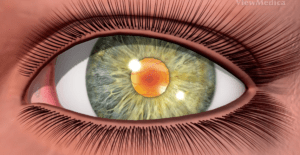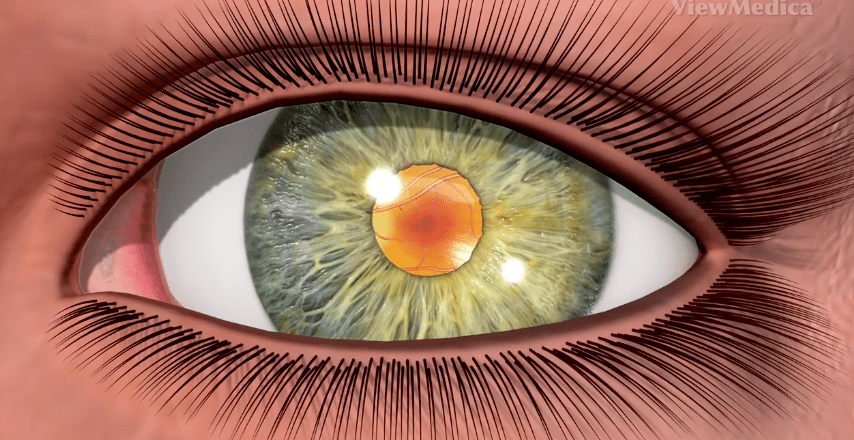 You’ve probably heard the term “cataract” but, if you’re like most people, you don’t actually know what it means. A cataract is a clouding of the eye’s crystalline lens, which sits behind the pupil and is responsible for focusing light. In a healthy eye, this lens is clear but over time proteins in the lens begin to clump and cloud the lens. Having cataracts is similar to looking through a foggy or dusty window. Objects look hazy, blurry, or less colorful.
You’ve probably heard the term “cataract” but, if you’re like most people, you don’t actually know what it means. A cataract is a clouding of the eye’s crystalline lens, which sits behind the pupil and is responsible for focusing light. In a healthy eye, this lens is clear but over time proteins in the lens begin to clump and cloud the lens. Having cataracts is similar to looking through a foggy or dusty window. Objects look hazy, blurry, or less colorful.
Aging is the most common cause of cataracts. Around the age of 40, the proteins in the lens begin to break down and clump. By the age of 50, many people start to have some clouding of their lenses, although noticeable vision problems may not occur until years later.
The American Academy of Ophthalmology reports that other risk factors besides aging for developing cataracts include:
- Genetics: parents, brothers, sisters, or other family members have cataracts.
- Certain medical problems, such as diabetes.
- Certain medications.
- Smoking.
- Having had an eye injury, eye surgery, or radiation treatments on your upper body.
- Having spent a lot of time in the sun without adequate sunglass protection.
What are the symptoms?
Cataract symptoms develop over time, and most commonly include some or all of the following:
- Blurred vision.
- Dimmed vision
- Bright colors appear faded or yellowish.
- Seeing double in one eye.
- Increased sensitivity to light.
- Increased difficulty seeing well at night.
A comprehensive eye exam is the only way to confirm that you have cataracts. Your ophthalmologist will examine your cornea, iris, lens and the back of your eye for abnormalities and signs of cataracts.
If you are diagnosed with cataracts but your symptoms are mild and not interfering with your daily tasks, your ophthalmologist will discuss steps you can take to protect your eyes and optimize your vision. You may find that a new eyeglass prescription will help you see better. Do not use eye drops or other products that claim to dissolve cataracts as there is no proven way to dissolve them. Surgery is the only way to remove cataracts, and you’ll know it’s time to consider surgery when cataracts keep you from doing activities you need or want to do.
At East Tennessee Eye Surgeons, Dr. Dawson and Dr. Gallaher specialize in the diagnosis, treatment, and surgical removal of cataracts. With two locations at 7800 Conner Road in Powell and 744 Middle Creek Road, Suite 200 in Sevierville, East Tennessee Eye Surgeons delivers the highest quality eye care in an exceptional setting. Visit our website to learn more about us, or call us at 865-546-1464 (Powell) or 865-908-7008 (Sevierville).

